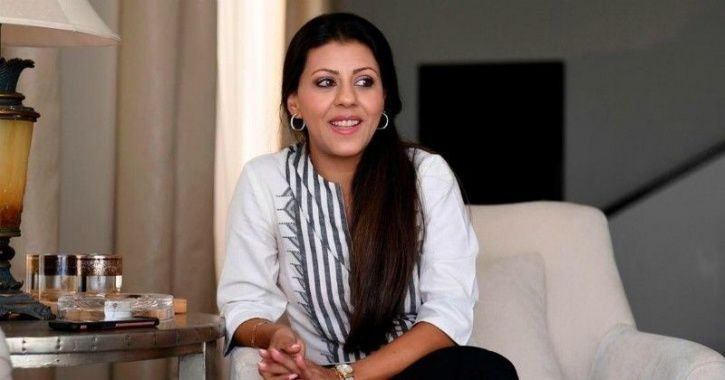(Our Bureau, May 24) When you are fighting a battle with your body, it’s not easy to overcome the odds and become an example for others. That’s why Saudi Arabian national Nouf Al Marwaai stands out. Born with an autoimmune disease that eventually started affecting her kidneys and prevented her from leading a normal life, Nouf took to yoga at the age of 19 in 1999. Suffering from excrutiating joint, muscles and body pain, Nouf was unable to do much at that time.

Nouf first went to Australia to obtain a diploma in physiology and anatomy, and that’s where she was introduced to Hatha yoga, weight management and stress release therapy. Subsequently, she traveled to India – where yoga originated some 5,000 years ago – and trained under teachers across Kerala, Delhi and the Himalayas. Here she learned not just the asanas, but also the practice of Ayurveda-based healing. Her condition started improving drastically and she became a big proponent of yoga.
Giving Back
It was then that she realized that the Arab world had been deprived of the powers of yoga and wanted to introduce the teachings in Saudi Arabia. Back in 2004, yoga was disapproved by a certain section of Saudi society and myths linked it with Hinduism. Pushing through all the misinformation and breaking stereotypes, Nouf became Saudi Arabia’s first certified yoga instructor after a struggle of 20 years. But the journey wasn’t without roadblocks. The 41-year-old’s first big break came in 2009 when she was made the regional director of Yoga Alliance International (YAI) for the Gulf region by YAI founder Swami Vidyananda. Prior to that, Nouf had held seminars for corporates and varsities which also caught the eye of the media.
“People started to know more about yoga and enquired about it and its health benefits,” she told ArabNews. By December that year, Nouf started a centre for yoga and other alternative medicines.
With glory came resistance. Hardliner ideologists made their opposition clear, but Nouf was steadfast. “There is a myth regarding yoga and religion generally, not only Islam… It’s totally unfair and ignorant to fight such a great health and well-being system and a systemic interesting sport using religion and other excuses just because we are intolerant to a certain ideology,” Nouf told News18.
Winds of Change
In another interview with Wion, Nouf said her Indian yoga teachers never forced any belief in her. “They respected every belief. They said we are teaching you a practice of lifestyle for health. We are not teaching you anything that contradicts your belief,” she said. In 2015, she co-founded the Riyadh-Chinese Medical Center in Jeddah. Stronger winds of change started blowing in 2016 when the Saudi government started talking of women’s sports and chose Princess Reema bint Bandar Al Saud to lead the Community Sports Federation.

In 2017, Nouf Al Marwaai met Princess Reema and yoga got official recognition from the government. “Sometimes people say yoga is not a sport. But scientifically if you look at yoga, it increases your pulmonary function, helps in metabolic rate issues and improves weight loss,” she said. What started as an effort to improve personal health has turned into a revolution. Now, yoga is being practiced in Saudi cities of Mecca, Riyadh Madina and Jeddah, which alone has more than 8,000 followers. Recognition came not just from her country but also from New Delhi which presented Nouf in 2018 with India’s fourth-highest civilian award Padma Shri, which is rarely given to foreigners. But work does not end here for Nouf. Her next aim is to bring Ayurveda and naturopathy into Saudi Arabia’s wellness mainstream.
Discover more fascinating Stories

Namaste
Any vacancy for yoga Coach?